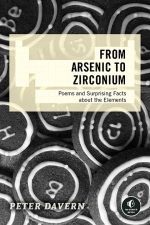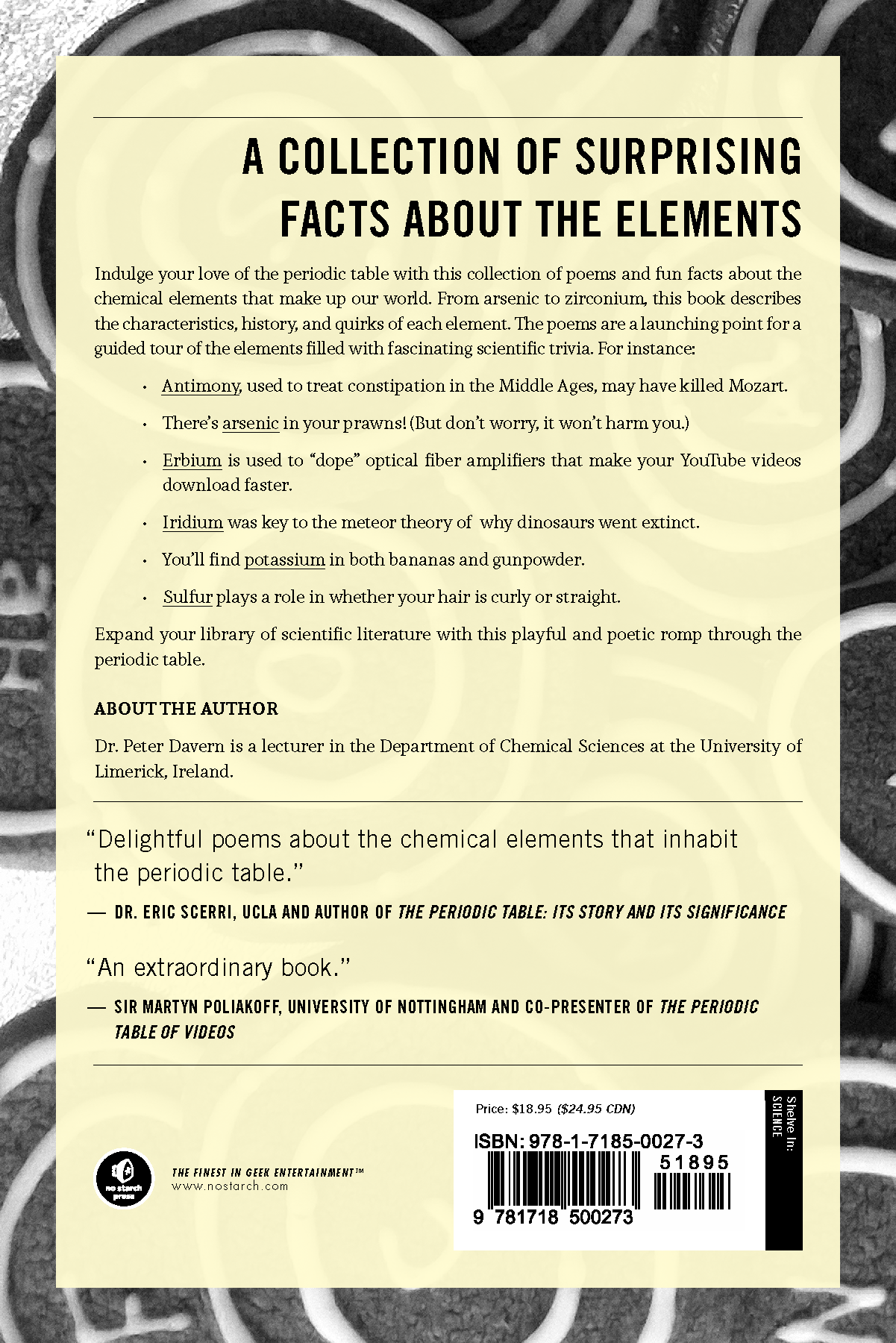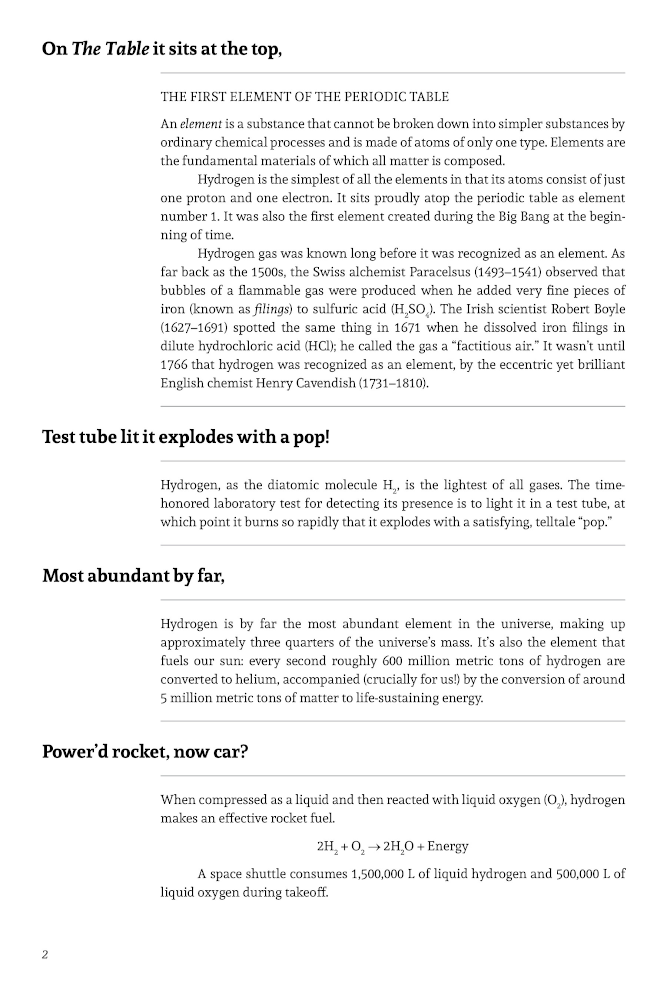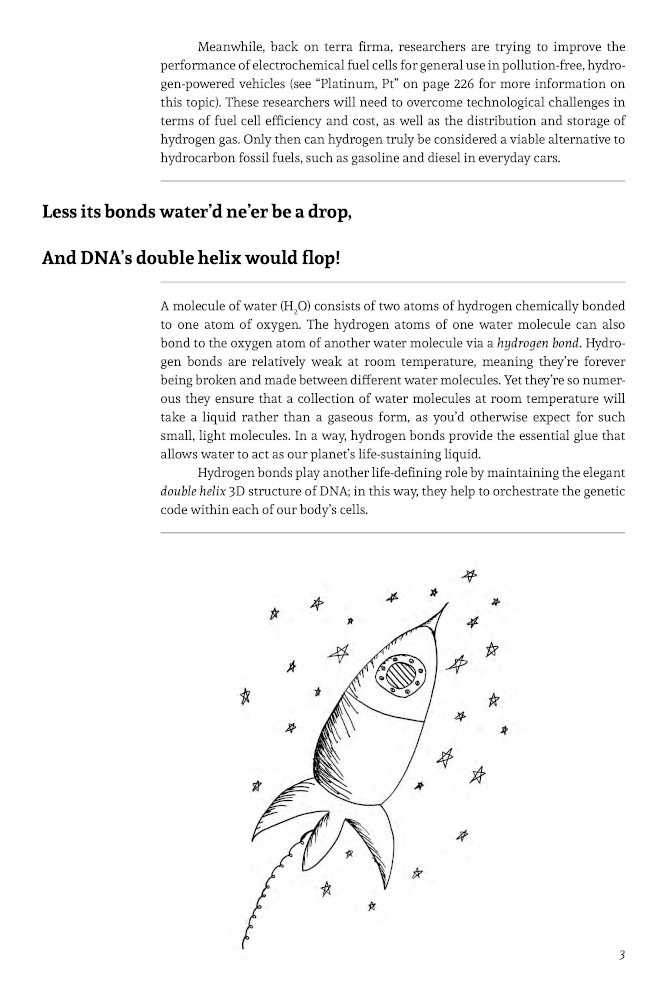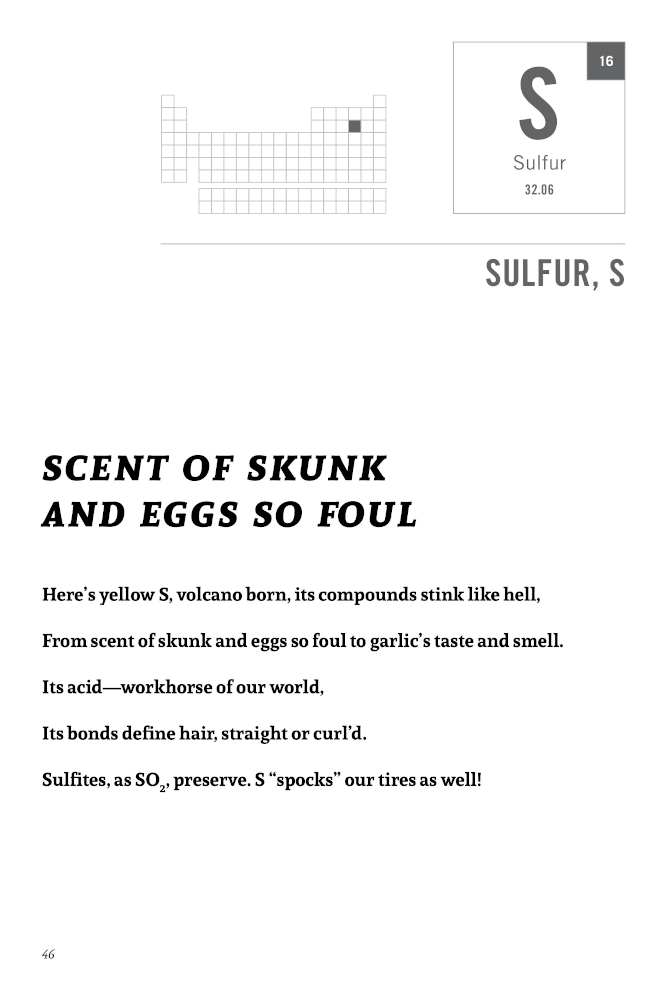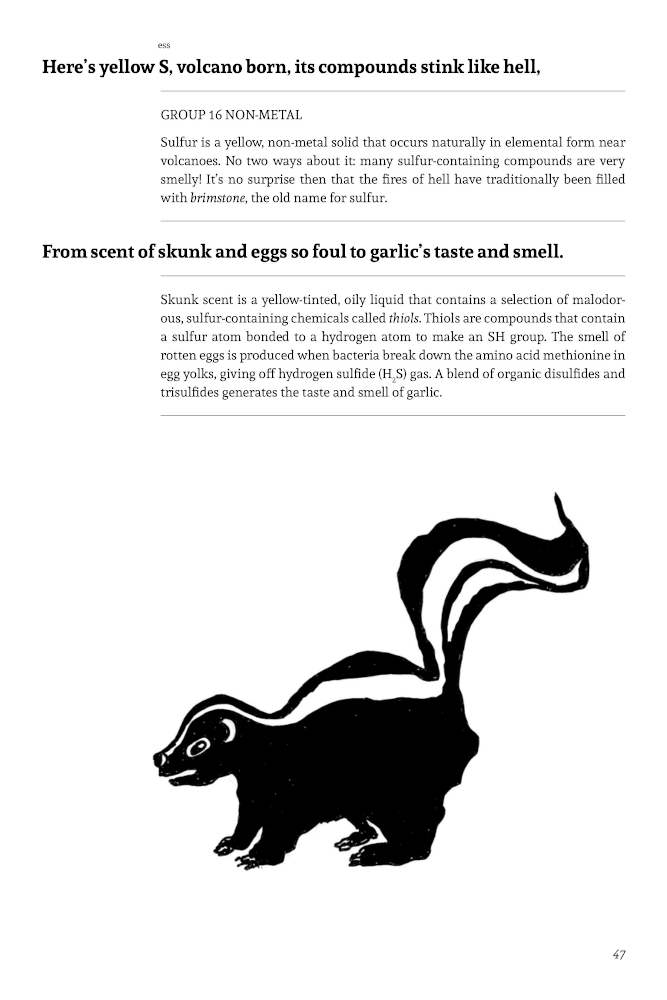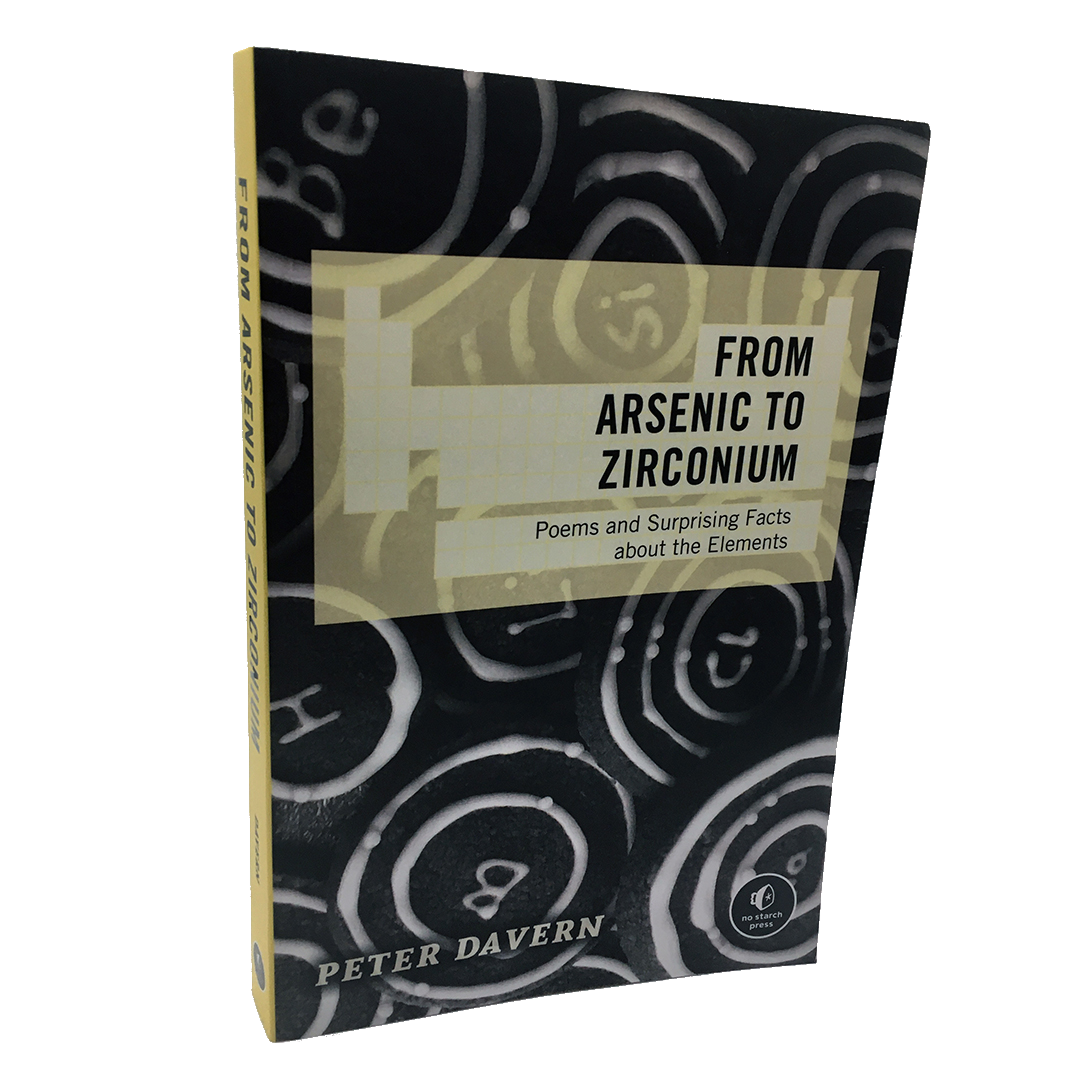From Arsenic to Zirconium
Look Inside!
Download Chapter 1: HYDROGEN, H
From Arsenic to Zirconium is an entertaining collection of poems and surprising facts about the chemical elements that make up our world. The poems are a launching point for a guided tour of the elements filled with fascinating scientific trivia.
For instance:
- Antimony, used to treat constipation in the Middle Ages, may have killed Mozart
- There’s arsenic in your prawns! (But don’t worry, it won’t harm you.)
- Erbium is used to “dope” optical fiber amplifiers that make your YouTube videos download faster
- Iridium was key to the meteor theory of why dinosaurs went extinct
- You’ll find potassium in both bananas and gunpowder
- Sulfur plays a role in whether your hair is curly or straight
Expand your library of scientific literature with this playful and poetic romp through the periodic table!
“Delightful poems about the chemical elements that inhabit the periodic table.”
— DR. ERIC SCERRI, UCLA AND AUTHOR OF THE PERIODIC TABLE, ITS STORY AND ITS SIGNIFICANCE
“An extraordinary book.”
— SIR MARTYN POLIAKOFF, UNIVERSITY OF NOTTINGHAM AND CO-PRESENTER OF THE PERIODIC TABLE OF VIDEOS
"If you are the type of science teacher who loves telling stories and sharing anecdotes to enhance your lesson material, this book is for you! Adding to the ever-growing library of books about the chemical elements, their properties and uses and their positions in the periodic table, Peter Davern has come up with an interesting and engaging approach to this fundamental area of chemistry . . . a budding chemist would also find endless fascination in its contents."
—Janet Mitchell, School Science Review
"This elegantly constructed poetic version of the periodic table and the attributes of its elements serves as a numeric alphabet guide to the basic makeup of our world. It should be a required text from grade school to the home library."
—Aron Row, Seattle Book Review
"Useful for the classroom . . . Being a science geek, I was never really into poetry, but this is poetry written by a science geek, for science geeks, so don’t let the word 'poem' put you off. All of the poems (one for each element 1–92) are five lines long, and after each line comes an explanation of the unique or exciting thing about that element."
—Holly Amerman, National Science Teaching Association, The Science Teacher Journal
Check out Peter Davern's piece on learning about the elements for National Science Teaching Association's The Science Teacher

